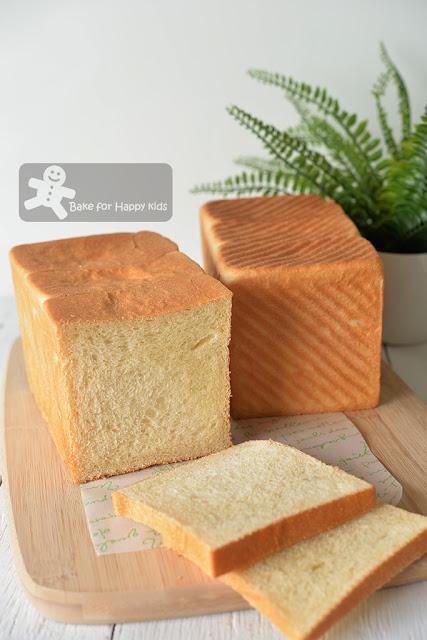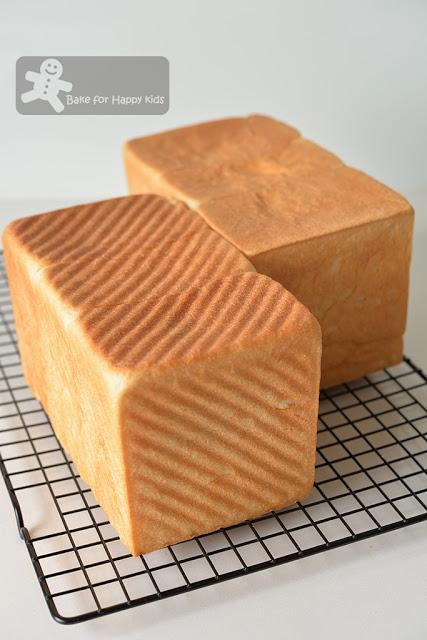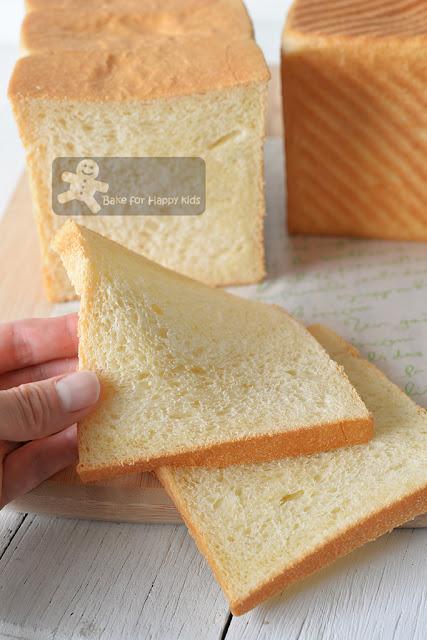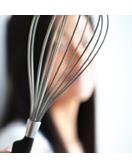For those who like baking your own breads, can I ask if you have tried baking Hokkaido Milk Bread?
For those who don't know...
Hokkaido milk bread (北海道牛奶麵包) is popular Asian bread which is well known for its soft-pillowy texture and sweet-milky taste.
Why Hokkaido milk? If you Google the word "Hokkaido Milk Bread", you will see this recipe from Christine's recipes and it is a highly rated recipe because many bakers and bloggers believe that the success of Christine's recipe is due to the addition of Tang Zhong (汤种). If you wish to know something more about Tang Zhong, you can read my previous blog post at here.
Then why this name? Like what I have found about Hokkaido chiffon cupcakes at here, I'm guessing that the Hokkaido milk breads may have nothing to do with Hokkaido!!! And the breads don't even need to be baked with Hokkaido milk!!!
Then, I wonder... Are the additions of Tang Zhong and cream making the so-called Hokkaido milk breads tasting so soft and good?
Plausible! After baking both equally fluffy and soft enriched sandwich breads with and without Tang Zhong at here (with Tang Zhong) and here (without Tang Zhong), I believe that the addition is Tang Zhong is probably NOT necessary.
And it is probably TRUE!!! These so-called Hokkaido milk breads that I have baked again with NO Tang Zhong and cream has shown that the addition of Tang Zhong and cream is really NOT necessary to enhance the softness in breads!!!
Isn't this good to know?

These really soft milky sandwich breads
... are baked by Hokkaido Milk Bread recipe and have NO Tang Zhong and NO cream.
Why NO-Tang-Zhong?
I have nothing against Tang Zhong and so please don't get me wrong...
It was just one day that I was going to bake Hokkaido milk breads again. While weighing the ingredients and staring at the recipe, the crazy me discovered that the Hokkaido milk bread with the cream replaced with milk is actually the same as the Spongy Soft Milk and Egg Enriched Sandwich Bread that I baked at here! And I was like OMG! OMG! OMG!!! I must be a crazy baking woman... LOL!!!
Despite that the origins of these recipes are completely different (one is Asian and one is not), the only two differences are:
1) this recipe contains 20g milk powder instead of 45g.
2) the milk used this recipe (assuming if the breads are made with Tang Zhong) is scalded whereas the liquid used in the recipe at here is just lukewarm water.
That's all!!!

Instead of baking the breads with golden brown dome tops...
I'm baking these sandwich breads into perfect square loaves.

Look! These milky breads are SO SOFT!!!
Due to the restricted space to rise upwards plus the use of real milk instead of water, these square breads won't be as tall as the spongy soft enriched breads at here... but they are definitely impressively SOFT like the ones baked without the lids at here and also those that baked with Tang Zhong and cream at here!
So why need Tang Zhong if you don't actually need Tang Zhong??? Hmmm...
Here's a video showing me how I baked my easier version of Hokkaido Milk Breads with NO Tang Zhong and NO cream. After watching the video, you might ask if you can bake these breads without scalding the milk. Yes, you can but the enzymes in un-scalded milk can break down gluten and prevent the bread dough from rising, resulting the breads to have denser crumbs than the breads that are made with scalded milk. Hence, I would definitely choose to bake these breads with scalded milk.
Thanks Bensound for the music in my video.Like my recipes? To get the latest updates, you can follow me at either my Facebook at here or here or my Instagram @zoebakeforhappykidsHere's the recipe that is modified from here
Make two 10 x 20 cm or 450g loaves
Note: You can use half of this amount to bake just one loaf.
400g milk, scalded and cooled to lukewarm at about 40°C (100°F)
100g eggs, at room temperature - about 2 large eggs but please use the exact weight.
650g bread flour with 12% protein
20g milk powder
60g caster sugar
8g salt
60g unsalted butter, softened at room temperature
2 1/2 tsp instant yeast
extra butter or vegetable oil spray to grease the loaf pans (plus the pullman lids if required)
extra bread flour for dusting and shaping
If you are using a breadmaker to knead and prove, add all ingredients into the breadmaker according to this order. Use "dough" setting to mix and knead dough for 30 mins or until the dough is elastic and allow the dough to prove for 60 mins.
If you are using an electric mixer with an hook attachment to knead, combine all ingredients except butter in the mixing bowl and mix at low speed until a soft dough forms. Then, knead in the butter until incorporated. Continue to knead at low speed for at least 25 mins or until the dough is elastic. It is important that the dough has to be elastic and stretchy. Cover the dough and allow the dough to prove in a warm and humid place for about 60 mins or until doubled in size.To shape the dough into bread loaves:
Grease 10 x 20 cm loaf pans (plus their lids if required) with butter or vegetable oil spray.
Divide dough into into 6 equal portions. Shape all portions of dough into smooth balls. Allow them to rest at room temperature for about 10 mins.
Using a lightly floured rolling pin, roll each portion into long and flat oval shape (about 20 cm) on a lightly floured non-stick surface. Use your fingers to pick one shorter side of the dough and tuck and roll the dough like a Swiss roll. Use the rolling pin to flatten and roll the dough into a long rod shape. Then, pick one shorter side of the dough and roll it like a Swiss roll again. Repeat this rolling step with the remaining portions of dough.
Place three rolled dough with their seams side down into the each prepared pan. Press the top of the dough lightly to form an even surface. Allow the dough to prove in a warm and humid place for another 60 mins or until the dough is going to reach the maximum height of the loaf pan. Cover loaf pans with lids if required.
Bake breads in a preheated 180°C (350°F) oven for 25 mins or until the breads are thoroughly baked inside. Remove bread from the loaf pan and transfer immediately onto a wire rack to cool completely before slicing and serving.
To store, wrap tightly in plastic wrap and keep at room temperature for 2-3 days or freeze in serving portions for 2-3 months.
Happy BakingPlease support me and like me at Facebook...

